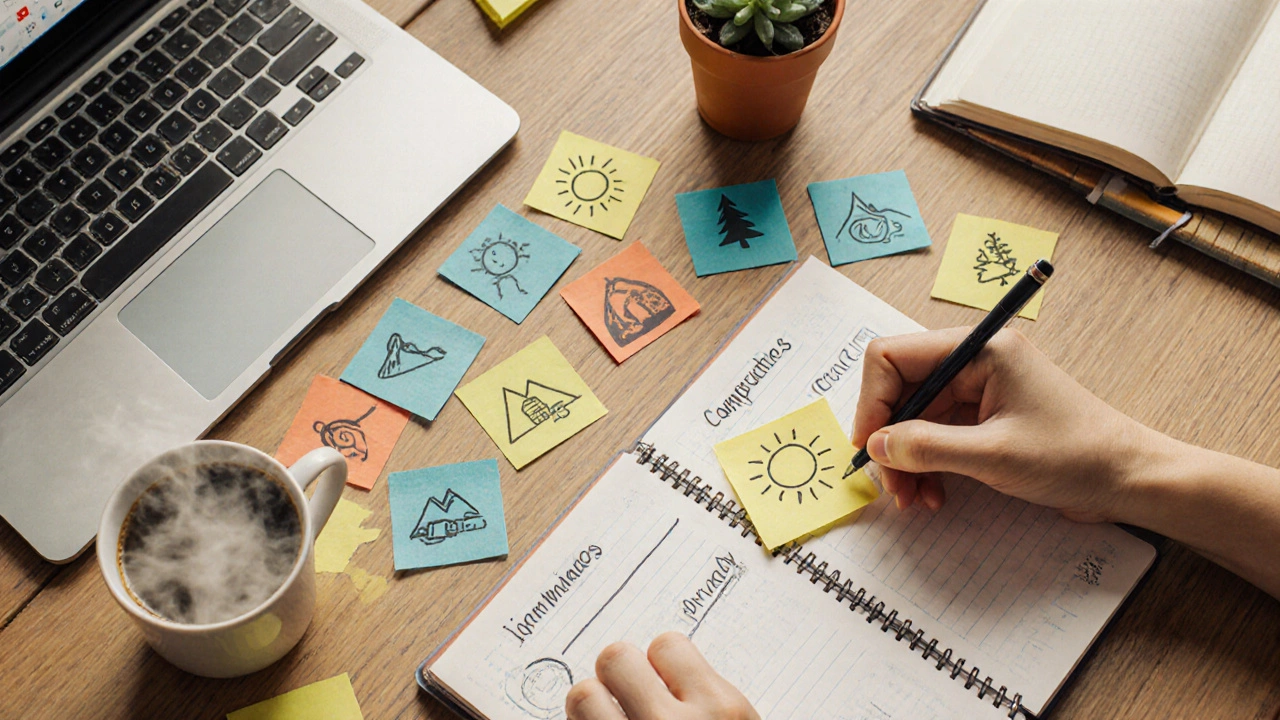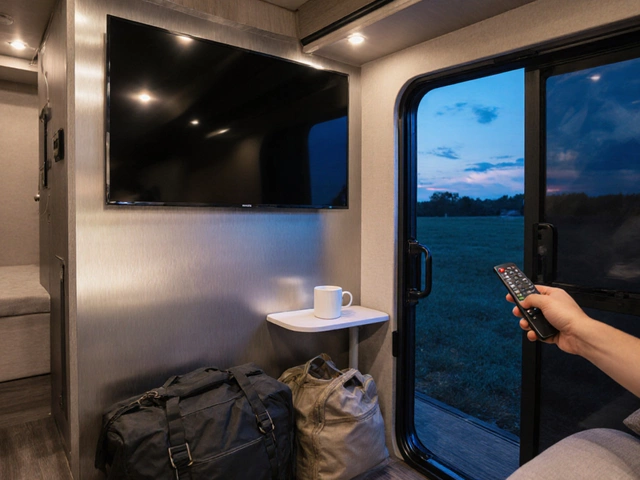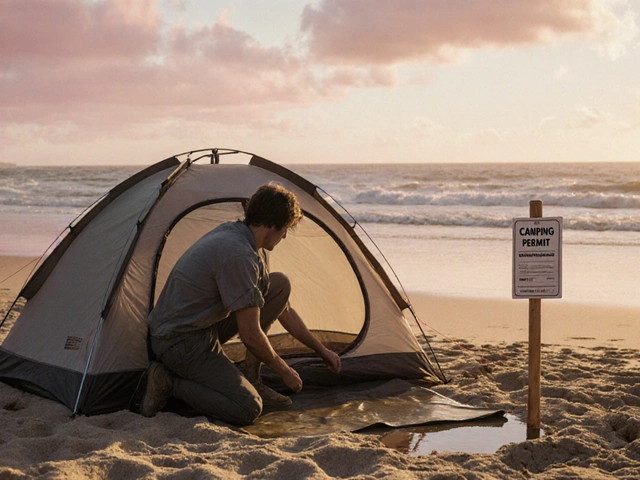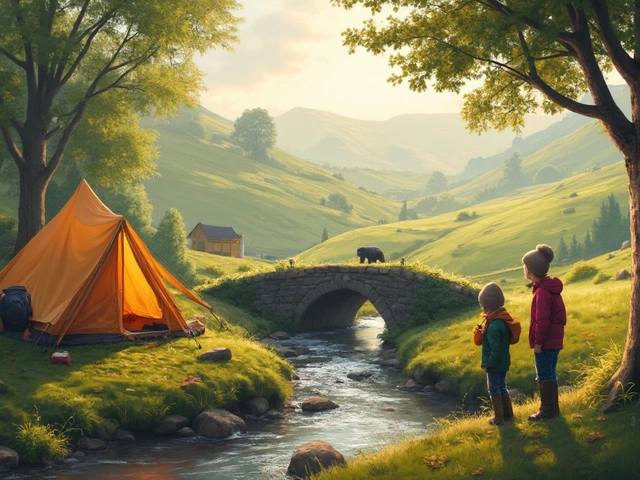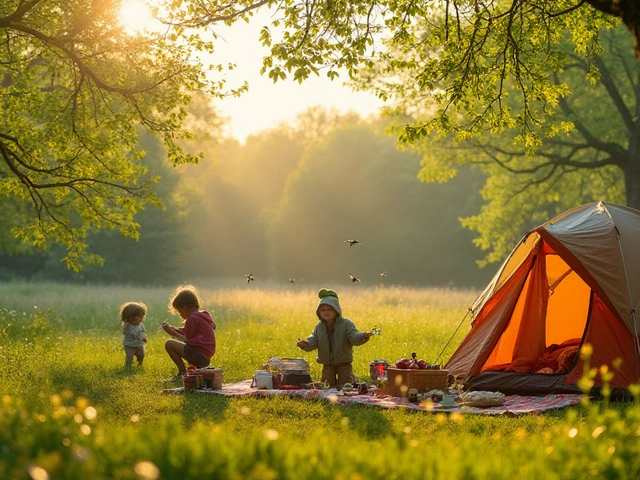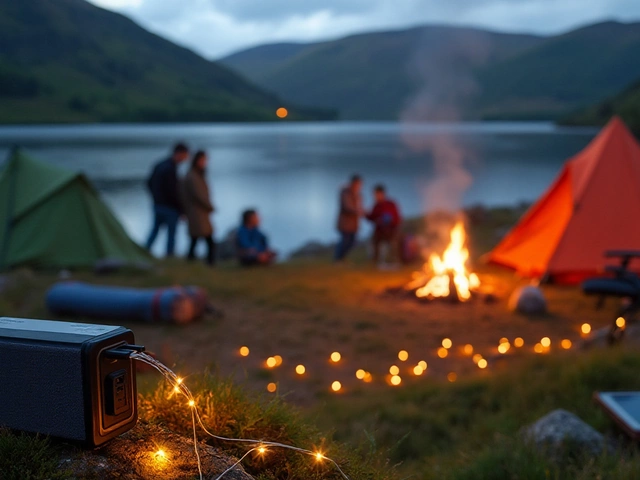Campsite Finder: Define Your Perfect Spot
Your Top Three Campsite Priorities
Location Type 1
Do you crave a beach sunrise, a forest canopy, or a mountain vista?
Amenities 2
Shower facilities, electric hookups, Wi-Fi, or a simple primitive setting?
Privacy Level 3
A secluded clearing versus a communal site with many neighbors?
Pet and Child Policies 4
Some sites ban dogs or have specific playground equipment.
Budget 5
Fees range from free wild spots to £50/night for luxury glamping.
Looking for the perfect campsite can feel like hunting for a needle in a haystack, especially when you have a weekend to spare and a list of must‑haves that seems endless. The good news? You can narrow down the options in a few minutes by asking the right questions, using a couple of handy tools, and knowing which details really matter. Below is a practical roadmap that turns the overwhelming search into a clear, confidence‑boosting process.
Key Takeaways
- Define your top three campsite priorities (location, amenities, privacy).
- Use specialised apps or databases to filter sites by those priorities.
- Check recent reviews and verify reservation policies before you book.
- Plan logistics - arrivals, water sources, waste disposal - ahead of time.
- Keep a backup site in mind in case your first choice fills up.
1. Pinpoint What ‘Perfect’ Means to You
Everyone’s idea of the ideal spot is different. Start with a quick brain dump and then rank the items.
- Location type - Do you crave a beach sunrise, a forest canopy, or a mountain vista?
- Amenities - Shower facilities, electric hookups, Wi‑Fi, or a simple primitive setting?
- Privacy level - A secluded clearing versus a communal site with many neighbors?
- Pet and child policies - Some sites ban dogs or have specific playground equipment.
- Budget - Fees range from free wild spots to £50/night for luxury glamping.
Write the top three items on a sticky note - they’ll become your filter criteria.
2. Choose the Right Research Tools
Once you know what you want, let technology do the heavy lifting. Below are three free or low‑cost platforms that specialise in campsite data.
- ParkFinder a web directory covering over 3,000 UK and European campsites with filter options for terrain, facilities, and pet‑friendly status.
- CamperMate a mobile app that combines user reviews, real‑time occupancy data, and GPS navigation for on‑the‑go planning.
- Google Maps ‘Camping’ Layer shows official campsite locations and user‑submitted photos, handy for a quick visual check.
Enter your top three criteria and let the platform generate a shortlist. Most tools also rank sites based on recent review scores, which saves you a trip down the comments section.
3. Compare Campsite Types - A Quick Reference
| Category | Typical Setting | Key Amenities | Average Fee (UK) | Best For |
|---|---|---|---|---|
| Beach Campsites | Coastal dunes or boardwalks | Toilets, showers, tide‑aware rules | £15‑£30 | Sunrise lovers, water sports fans |
| Forest Campsites | Woodland in national or regional parks | Picnic tables, fire pits, limited electricity | £10‑£25 | Hikers, nature photographers |
| Luxury Campsites | Resort‑style grounds with cabins or glamping pods | Hot tubs, Wi‑Fi, gourmet meals | £40‑£80 | Comfort seekers, families with small kids |
| Wild Camping | Open countryside, no formal facilities | None (self‑sufficient) | Free (where legal) | Adventure purists, low‑budget travelers |
| Lake Campsites | Shorelines of reservoirs or natural lakes | Boat ramps, fishing platforms, basic toilets | £12‑£28 | Anglers, paddle‑boarders |
Use this table to match the setting you crave with the amenities you need. If you love early morning swims, a lake campsite with a boat ramp scores high. If you can’t live without a hot shower, the luxury column is your target.
4. Validate the Site with Real‑World Feedback
Even the prettiest brochure image can hide a hidden flaw - noisy neighbours, muddy grounds, or a broken water line. Here’s how to weed out the bad apples.
- Read the last five reviews on ParkFinder. Look for recurring phrases like “clean toilets” or “hard to find spot”.
- Check recent photos on the app or Instagram. A recent image with a clear sky and tidy facilities is a good sign.
- Ask a quick question in the site’s comment section - many owners reply within a day.
If the majority of feedback points to a consistent issue, move on. A single negative review is often a fluke.
5. Confirm Reservation Policies and Fees
Booking rules differ widely. Some campsites allow instant online payment, while others require a 24‑hour phone call.
- Cancellation window - Look for at least a 48‑hour free‑cancel policy. Anything tighter could cost you if plans change.
- Deposit requirements - Some luxury sites ask for a refundable £20 hold; wild camps do not.
- Extra fees - Check if there’s a “pet fee”, “electricity surcharge”, or “late‑check‑out” charge.
Write down the reservation URL or phone number now; you’ll thank yourself when the campsite fills up fast (peak months see 70% occupancy by mid‑May).
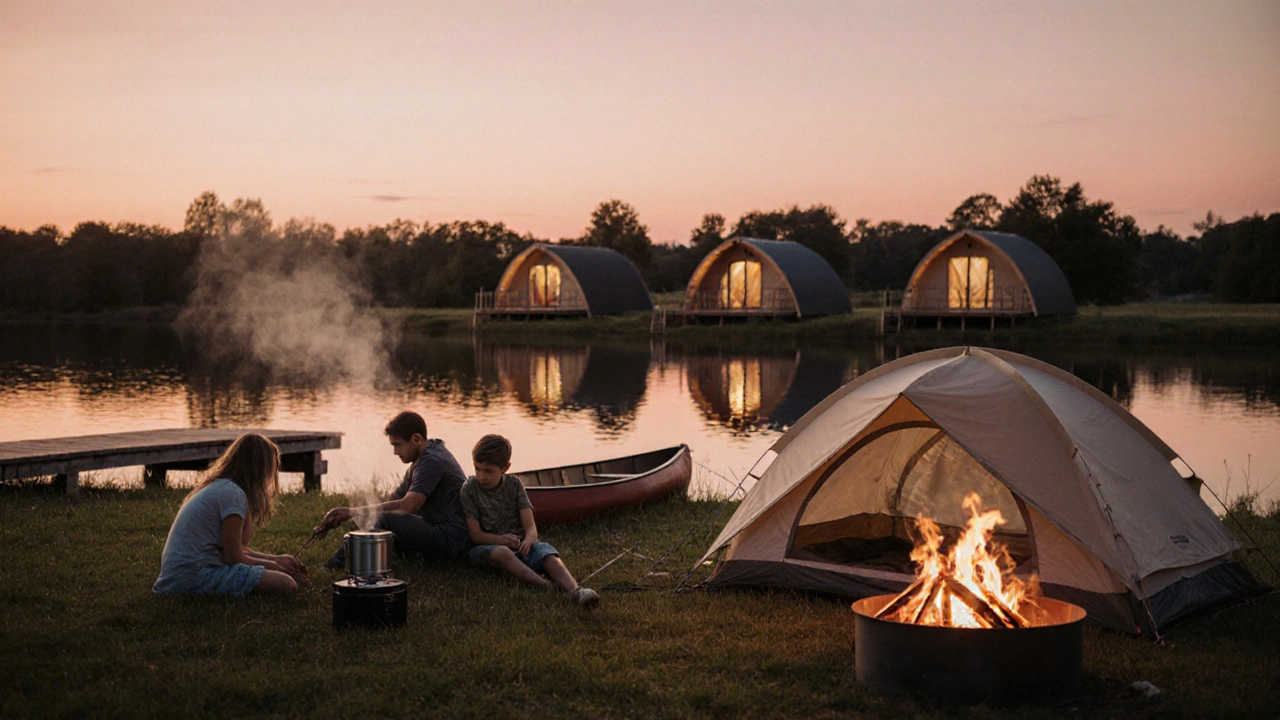
6. Plan the Logistics Ahead of Time
Getting to the site is as important as finding it.
- Travel route - Use Google Maps to plot a route that avoids low‑clearance bridges if you’re driving a campervan.
- Water source - Some sites have a potable tap; others require you to bring your own. Note the distance to the nearest source.
- Waste disposal - Verify if the campsite provides a dump‑station for black water or if you need to carry it back.
- Power availability - Confirm voltage (230V UK standard) and amperage if you need electric hookups.
- Local regulations - Some forest sites ban open fires; others provide fire pits. Ignoring this can lead to fines.
Having this checklist printed or saved on your phone cuts down on last‑minute scrambling.
7. Keep a Backup Plan
Even the best‑ranked campsite can get fully booked the day before you arrive. Always have a second‑choice site that meets at least two of your top three criteria. If both are unavailable, note the nearest “wild camping” area where you can set up a low‑impact tent.
8. Test the Spot with a Short Stay
If you have the flexibility, book a one‑night trial before committing to a long holiday. A Saturday night stay lets you gauge noise levels, water pressure, and how quickly you can set up your gear. After the trial, you’ll know whether the site truly feels “perfect”.
Frequently Asked Questions
How far in advance should I book a campsite during peak season?
For popular beach or forest sites, aim to reserve 6‑8 weeks ahead. Luxury glamping spots often fill up 3‑4 months in advance, especially for weekends.
Can I rely on campsite reviews from the past year?
Yes, recent reviews (within the last 12 months) reflect current facility conditions and management. Look for a pattern - if three out of five recent reviews mention a broken shower, it’s likely still an issue.
What’s the difference between a campsite and a caravan park?
A campsite generally offers open plots for tents or self‑contained vehicles and basic amenities. A caravan park usually provides fixed pitches with electric and water hookups, and often includes additional services like on‑site shops or entertainment facilities.
Are there any legal considerations for wild camping in the UK?
Wild camping is legal on most Scottish land under the “right to roam”. In England and Wales it’s tolerated only with landowner permission and by following the “Leave No Trace” guidelines. Always check local bylaws before setting up.
How do I find pet‑friendly campsites?
Both ParkFinder and CamperMate have a “Pets allowed” filter. Additionally, read the site’s policy page - some allow dogs but charge a £5 nightly fee.
What should I pack for a luxury campsite versus a wild site?
Luxury sites often provide bedding, towels, and kitchenware, so bring only personal items and a small cooler. For wild camping, pack a sleeping pad, portable stove, water filtration system, and a reliable headlamp.
